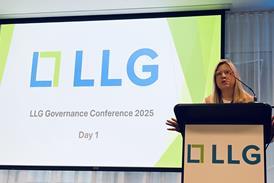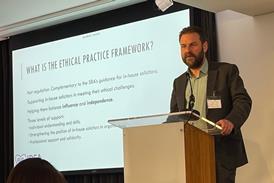Profit-related pay (PRP) works by making part of an employee's remuneration variable by reference to the results of the company for which he or she works.
If a business down-turn occurs, jobs are saved because the company's costs are automatically reduced.
If profits increase, the marginal costs of taking on one extra employee are cut, as this is funded out of PRP being spread among a larger number of employees.
Accordingly, in an upturn, unemployment can be reduced more quickly.The concept was introduced into tax legislation by the Finance (No.2) Act 1987.
It was based on academic research undertaken by Professor Martin Weitzman of Massachusetts Institute of Technology in the USA.The government accepted that employees would not be willing to agree to the whole of their earnings varying with the fortunes of their employer.
Accordingly, in adopting Professor Weitzman's theory, it provided an incentive for up to 20% of an individual's pay (subject to certain limits) to be linked to profits.Initially, PRP schemes were unpopular with employers.
Income tax reliefs were modest and the schemes were perceived as cumbersome to administer.
The Finance Act 1989 introduced major relaxations and the Finance Act 1991 doubled available tax relief to its current limit.Following the 1991 budget, PRP became much more popular and the number of registered PRP schemes increased dramatically, so that by 31 December 1993 there were almost 6500 schemes covering 1.6 million employees.If an employer wishes to operate a PRP scheme it needs to register it with the Inland Revenue.
Registration does not equate to approval and, in registering the scheme, the Revenue does not review the scheme rules.The application for registration contains certain statistical information and a declaration by an independent accountant that the scheme rules comply with the requirements of the law and that the company is able to maintain the necessary books and records.Because of the requirement for an independent accountant to sign the application for registration, PRP has tended to be an area of tax law where solicitors have not been required to become deeply involved.
However, there are often employment law consequences which require expert legal advice.
In addition, many firms of solicitors are introducing PRP schemes for their own employees as a way of enhancing employees' take-home pay while assisting the firm in controlling its payroll costs.The essence of PRP is the creation of a distributable pool from which payments are made to employees.
The pool is a function of the profits of an employment unit for a profit period.Any PRP paid under a registered scheme is tax free up to the lower of 20% of total pay including PRP and £4000 per year.
Total pay is pay subject to PAYE - net of pension contributions paid under the net pay arrangements and charitable contributions under the payroll giving schem e.The PRP included in total pay is that for the profit period whenever it is paid.
Accordingly, the maximum annual tax saving is £1000 for an employee with a marginal rate of tax of 25% and £1600 for an employee with a 40% marginal rate.If an employee agrees to convert part of his or her salary into the maximum amount of tax-free PRP and if that sum can be delivered to the employee, the tax relief provides most employees with an annual increase in take-home pay of between 5% and 7%.The effect of the tax relief on a higher salary level is a lower percentage but most employees can obtain a benefit considerably in excess of the current rate of inflation.
Whether employees are prepared to accept the conversion of part of their salary into a variable amount that cannot be guaranteed depends upon the design of the scheme and the stability of profits of the business.Two methods can be used to create the distributable pool from which PRP is paid.
Under the first (method A), the pool is equal to a fixed percentage of the profits for the profit period.
Thus, if the scheme provided for a fixed percentage of 10% and the profits of the company were £1 million, the distributable pool would be £100,000.
This would then be paid out as PRP.Under the second (method B), the distributable pool is calculated by taking a nominated amount which the company chooses.
This would increase or decrease in line with fluctuations in profit.
For example, if the company selected £100,000 as its nominated sum and profits increased in the first year of the scheme from the previous year by 20%, the distributable pool would be £120,000.The legislation in paras 13 and 14 of sched 8 to the Taxes Act 1988 provides a number of controls which can lessen the volatility of the PRP.
The first control is an upper percentage limit whereby profits are disregarded if they exceed a percentage of a specified earlier year.For method A schemes, in the first profit period, the percentage can be related back to a base year.
This can be any period of 12 months ending in the two years before the commencement of the first profit period.
In subsequent years, the upper percentage limit applies from one period to the next.Under method B, the upper percentage limit will always relate to the immediately preceding period of 12 months.
The upper percentage limit must be 160% or greater.
In addition, following the November 1993 budget, the upper percentage limit must be increased by a further percentage if the overall pay in the employment unit has reduced between the relevant prior period and the first profit period.
This reduction in pay is then expressed as a percentage of the profits in that earlier period and the result added to the basic upper percentage limit.This rather clumsy approach was introduced to counteract a perceived abuse whereby profits were effectively artificially inflated by a salary sacrifice PRP scheme.
This allowed the upper percentage limit to be reached at a much earlier stage because PRP is one of the permitted adjustments to profit, so it could be capped at much smaller real profit increases.In addition to the upper percentage limit, it is also possible to specify in a scheme that no PRP will be paid if profits are equal to or less than the profits of the specified earlier year.A further control is that under method B schemes, a limiting fraction of no greater than one half can be used which dampens the percentage movement in profit.
For example, if profits were to increase by 40% and a fraction of one half used, the distributable pool would i ncrease by 20%.
Conversely, if profits fall, the reduction in the distributable pool is dampened by the fraction.The profit period must be a period of 12 months and the profits must be subject to a true and fair view audit opinion.
The basic profit number to be taken is profit after tax and extraordinary items but, in producing a profit and loss account for a PRP scheme, it is possible to leave out of the account extraordinary items, the tax charge and, in addition, goodwill, interest receivable or payable, research and development costs, PRP and national insurance on PRP.
There is consequently some flexibility in determining the profit measures to be used.
The profit must be for an employment unit which is an undertaking carried on with a view to profit.An employment unit can either be a partnership, unincorporated business, company, group of companies, part of a group of companies or some smaller unit such as a division of a company or even, for example, in a retail group, each shop.
Whichever unit is selected must be capable of producing a profit and loss account capable of audit and the costs of so doing should not outweigh the benefits that can be produced by a scheme.The whole of the distributable pool must be paid out to employees who participate in the scheme on similar terms.
However, before determining who can participate, it is necessary to exclude from participation any employees having a material (25%) interest for the whole of the profit period.
In addition, an employer can exclude employees who have not been employed for a minimum period of time which can be a specified period of up to three years and part timers who are not required to work 20 hours or more a week.The employer can discriminate by excluding certain named individuals or certain categories of individuals.
However, 80% of employees on the first day of each profit period must be eligible to participate disregarding the material interest, short service and part-timer exclusions.The similar terms test requires that employees either receive an equal amount per person, or participate pro rata to their earnings level (although it is possible to discriminate against higher paid employees).
Participation can also be linked to length of service or other objective factors.
It is not permissible to link an employee's participation to any discretionary performance measure.The Inland Revenue accepts the use of salary banding so that employees earning between two bands will participate at an identical level.
In general, the bands should be £3000 or less although the Revenue will accept bands of up to £5000.It is not necessary to await the determination of the profit before commencing payments under a PRP scheme.
It is permissible to pay out at any frequency desired, provided that the employer is prudent in its approach so that it does not over-distribute in relation to the size of the available pool.Many schemes which are introduced in companies with stable profits will make payments on a weekly or monthly basis during the course of a profit period although leaving some amount of the planned PRP for payment once profits have been determined.There are three principal types of PRP scheme.
The first of these is a bonus scheme which uses PRP as an incentive to employees to maximise an employer's profit.
Typically, an interim payment of PRP would be made at some time during the profit period with a final payment made once the profits have been finally determined for the year.There is also the salary conversion scheme method.
This has the potential for p roviding the greatest benefit.
Employees will be requested to consent to a reduction in their guaranteed basic salary in return for a planned amount of PRP.
The larger part of this planned amount will be paid out at the same interval as normal salary payments and, because the PRP element is tax free, this can give rise to an immediate increase in take-home pay.At the end of the year, once profits have been finally determined, a top-up payment is made, if any is due, to give each employee his or her full entitlement.
This sort of scheme carries an element of risk.
If an employer over-distributes PRP during the year, the Inland Revenue has the power to cancel the scheme with retrospective effect and claim the PAYE, on a grossed-up basis, that the employer failed to withhold on all the payments of PRP.The third option is a pay increase substitution scheme.
Here, the employer will not reduce the individual's basic salary but, in lieu of a salary increase, will introduce a PRP scheme which, if the company performs to budget, will pay out the intended pay increase.
Any variants from budget will result in a smaller or higher pay award.Because PRP will be received tax free, this enhances the value of the pay award to employees.
Over time, the PRP element of total pay will increase as each year a further performance related element is added.The key issue in introducing a PRP scheme is that employees will have to assume some level of risk.
The Inland Revenue will not accept an employer guarantee as to the level of PRP or an undertaking to make good any shortfall from an estimated amount.
It argues that this would mean the scheme provides something other than PRP which would seek to cancel the scheme.Notwithstanding the fact that PRP cannot be guaranteed, many businesses are sufficiently stable that, within defined parameters, it is possible to estimate with reasonable certainty the level of PRP that will be available.
Because of the tax relief associated with PRP, any reduction in the expected amount may not leave the employee worse off.Another key area of concern is the impact a PRP scheme might have on employees' pension entitlements.
The Inland Revenue accepts that PRP constitutes pensionable remuneration and, therefore, it is possible for an employee to pay contributions to an occupational fund or to a personal pension or retirement annuity scheme based on the appropriate percentage of PRP paid.As far as benefits are concerned, PRP will be regarded by the Pension Schemes Office as a fluctuating emolument and will require some averaging of the amount over the period for which the scheme has been in place.
This could reduce the benefits payable under a scheme compared to the amount that would be available if the individual received a higher guaranteed basic salary.
In introducing a PRP scheme, it may be prudent to develop a special arrangement for employees close to retirement.Life assurance benefits payable under an exempt approved arrangement may also be affected by the introduction of PRP - although final remuneration for life insurance purposes can be taken as a different measure to that used for pension benefits.
Nevertheless, it is recommended that employers undertake to maintain life insurance cover, if necessary by top-up payments outside the tax-exempt scheme.A further area of concern is whether banks and building societies will take into account PRP for mortgage ratio purposes.
There is no hard and fast rule, although the lenders' attitude to PRP will depend on the way in which the scheme is structured and any comm ent the employer can make about the employee's degree of risk.In many cases, lenders have been prepared to accept all the planned amount of PRP.
In others, particularly where PRP is more akin to a bonus scheme, only 50% of the amount will be taken into account.
In introducing a scheme, it is vital that the employer makes contact with a number of lenders so it can present the position fairly to employees.The PRP arrangements operate on the basis of an annual return which is signed by both the employer and an independent accountant.
The Inland Revenue reserves the right to demand further information or inspect records but, in the vast majority of cases, it relies on the certifications as evidence that the tax relief has been properly given.
Because the Revenue has wide powers to cancel schemes it is crucial that the company is able to administer the scheme correctly.PRP can be a valuable component of an employee's remuneration package and can assist the employer in controlling costs as well as giving employees the incentive to perform to their best.
It is, however, not a gimmick and time and resources must be invested to introduce and operate a scheme correctly.



























No comments yet